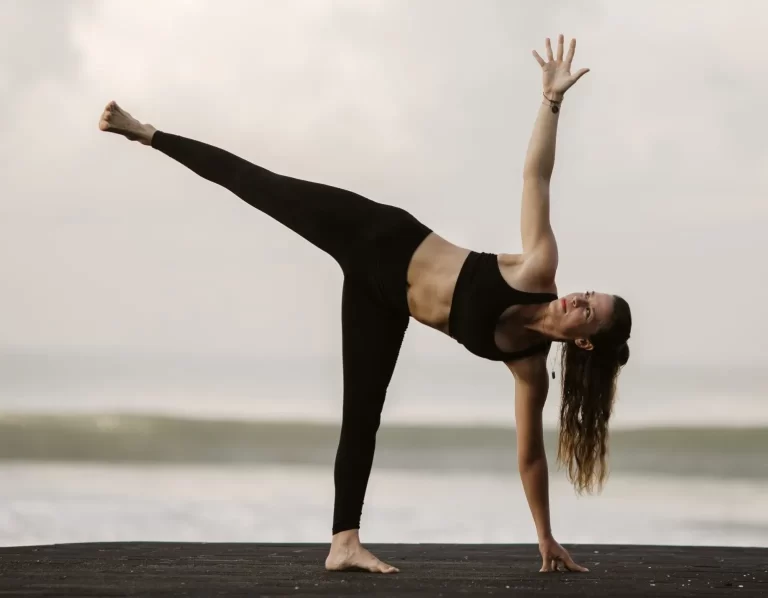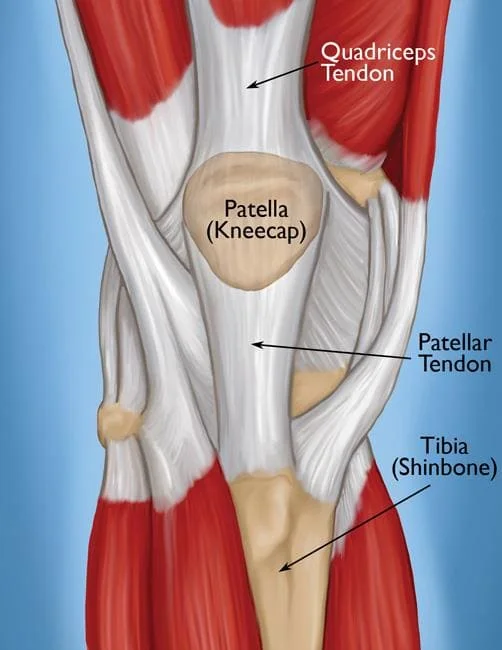30 Best Exercises for Hamstring Tendonitis
Introduction:
Exercises for hamstring tendonitis focus on gradually strengthening the hamstring muscles while minimizing stress on the tendons. Hamstring tendonitis is a condition characterized by inflammation and irritation of the hamstring tendons, which are located at the back of the thighs, connecting the hamstring muscles to the ischial tuberosity (sit bones) and the lower leg bones. This condition can result from overuse, improper technique during physical activities, or insufficient warm-up and stretching routines.
Tendonitis is commonly caused by overuse and causes acute, or immediate, discomfort that can be relieved with rest and minimal first aid. Most people can resume normal exercise after roughly a week. Hamstring strengthening exercises help reduce leg pain. To maintain an active lifestyle and good health, exercise is a need.
Stretching can assist in relieving the stiffness and irritation that is causing your hamstring tendonitis pain. These lengths Can help with recovery, especially during or after higher-level exercises. Exercise helps to strengthen the hamstrings and other muscles. Exercise may be helpful to promote flexibility, reduce stress, and release muscle tightness.
Tendinopathy, or weak, pulled, torn, stiff, and inflamed hamstring muscle, is a common problem brought on by overuse, harm, or inactivity. Physical therapy might provide you with relief in addition to rest and medicine. Exercises for hamstring rehabilitation help the muscles become strong and flexible.
Exercise benefits for Hamstring Tendinitis:
Regular exercise has the following advantages:
- Muscle strength has increased.
- Enhances daily exercise performance
- Improved posture or balance as a result of increased range of motion
- Muscle relaxation
- Reduce Hamstring Muscle pain
- Improve motion
- Increase flexibility
- Reduce tension or tightness.
- Physical fitness has improved
- Reduced chance of future injuries or re-injury
- Pain tolerance for your favorite everyday activities has increased.
Best Exercises for Hamstring Tendonitis
The following are some of the finest exercises for hamstring tendinitis.
Seated Hamstring Stretch
- Maintain good posture while sitting on the edge of your seat. (relatively flat back and shoulders back)
- Straighten your knee joint and place your heel on the floor, toes free and facing up the ceiling, with the leg you want to stretch.
- Shift your weight forward while bending forward at the hips and keeping your back flat.
- Continue to lean forward with your trunk until you feel a stretch at the back of your leg.
- Hold this position for a few seconds.
- Then return to your neutral position.
- Then relax.
- Repeat with the other leg.
- Repeat this exercise 5-10 times.
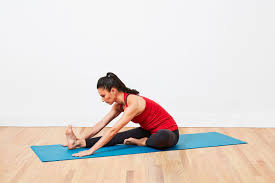
Bridges
- Begin by lying down in a relaxed position on the bed.
- Put your feet flat on the bed’s surface while bending your knees.
- Then contract your abdominal muscles.
- Raise your body up.
- Maintain your arms by your sides.
- Hold for a couple of seconds.
- Lower your body level.
- Return to your neutral position after that.
- Then relax.
- Repeat 5-10 times on the other side.

Straight Leg Raise
- Begin in a relaxed supine position on the table or the floor.
- Now, bend one knee.
- Then gradually raise your entire leg.
- While keeping the opposite knee straight.
- Hold for a few seconds after that.
- After that, lower your leg.
- Slowly return to your neutral stance.
- Then rest.
- Repeat on the opposite side.
- Repeat 5-10 times.

Foam Roller
- Under your hamstring, place a foam roller.
- Keep hands behind your hips on the ground.
- Raise your hips off the ground to shift your weight onto the foam roller.
- Slowly roll your hamstring around the foam roller, pausing when you reach an irritating region.
- Back and forth over the aching places for 15 to 20 seconds.
- Then return to your neutral position.
- Then relax.
- Repeat with the other leg.
- Repeat this exercise 5-10 times.

Squats
- Start by taking a calm posture on the ground.
- Stay focused in your center.
- Take a breath in.
- Straighten your knees.
- Knees should be bent at least 90 degrees while maintaining equal weight on both legs.
- Maintain a straight back.
- Hold this position for a few seconds.
- Then return to your neutral position.
- Then relax.
- Repeat this exercise 5-10 times.
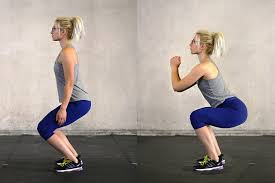
Hamstring Band Stretch
- Lay on a yoga mat with your back to it.
- Raise one leg off the mat, knee slightly bent
- Wrap a resistance band around the sole of the foot of the outstretched leg.
- Pull the leg in as far as it will comfortably go toward your chest.
- Hold this position for a few seconds.
- Then return to your neutral position.
- Then relax.
- Repeat with the other leg.
- Repeat this exercise 5-10 times.
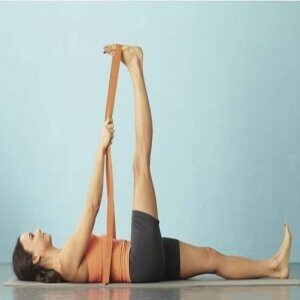
Knee to Chest
- Begin by lying on your back.
- Wrap your arm around your leg below the knees.
- Raise your legs to your chest.
- Hold for a few seconds.
- Then, drop your legs.
- Return to your neutral position after that.
- Then relax.
- Repeat the other side.
- Repeat 5-10 times.
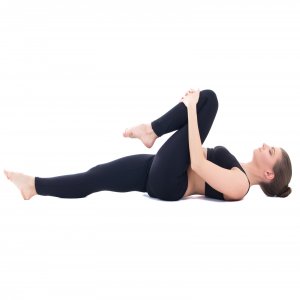
Pigeon Stretch
- Begin with relaxed seating and place your hands on your knees on the floor.
- Tighten your abdominal muscles now.
- Then extend your left knee forward and to the side.
- Tuck your right toes beneath and slide your right leg back.
- Spread your toes on the left side.
- Maintain a straight spine and look up.
- Maintain this position for a few seconds.
- Then slowly return to your neutral stance.
- Then relax.
- Repeat 5-10 times more.
- Repeat the exercise with the other leg.

Hamstring wall Stretch
- Your healthy leg should be positioned through the wall while you lay on your back in the foyer.
- To straighten your knee, move your injured leg up the wall.
- Your leg’s back should feel slightly stretched.
- Do not arch your back.
- Do not bend either knee.
- Continue to place one heel on the ground and the other one against a wall.
- Do not point your toes.
- Hold this position for a short while.
- After that, return to your neutral position.
- Then relax.
- Repeat 5-10 times more.
- Repeat the exercise with the other leg.

Hamstring curl with a physioball
- Lay on your back with a physioball under your feet.
- Keep your palms flat on the floor and your hands by your sides.
- Suspend your hips above the ground.
- This is where everything begins.
- Your feet should be on the ball with the soles facing up.
- Both your legs should be fully extended.
- To bring the physioball closer to your hips, bend your legs inward.
- Extend your legs as you slowly roll the physioball back to the beginning position.
- After that, return to your neutral position.
- Then relax.
- Repeat 5-10 times more.
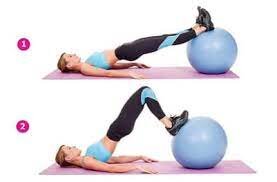
Ball Bridge Exercise
- Lie on your back and place an exercise ball under your feet.
- Lift your hips, pelvis, and buttocks into the air while maintaining a level pelvis.
- Hold this position for a short while.
- After pausing, descend once more to the ground.
- After that, return to your neutral position.
- Then relax.
- Repeat 5-10 times more.
- As you rise and fall, try to keep your pelvis from swaying.
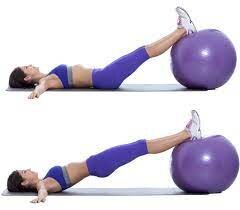
Standing hamstring stretch
- Your injured leg’s heel should be placed on a 15-inch-high stool.
- Maintain a straight knee.
- When you begin to feel a slight stretch in the back of your thigh, lean forward and bend at the hips.
- When doing this, avoid rolling your shoulders and bending at the waist to avoid stretching your lower back instead of your leg.
- Hold this position for a few seconds.
- Then return to your neutral position.
- Then relax.
- Repeat with the other leg.
- Repeat this exercise 5-10 times.

Lunges
- Step forward with your right leg as you stand up.
- Bend your right leg while bringing your left knee to the floor.
- For a short while, maintain this posture.
- Then take a position that is neutral.
- Then relax.
- This time take a stride forward with your left leg and dip your right leg to the ground.
- Repeat this exercise 5-10 times.
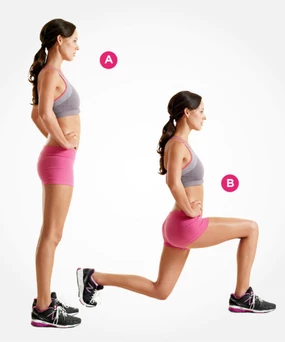
Prone hamstring curl
- Place your feet hip-width apart on your stomach.
- Wrap the band around your heels and flex your ankle.
- Keep your thighs and hips on the mat by bending your knee and pulling your heel towards your buttocks.
- When you can’t pull any further, stop.
- Then take a position that is neutral.
- Then relax.
- Repeat with the other leg.
- Repeat this exercise 5-10 times.
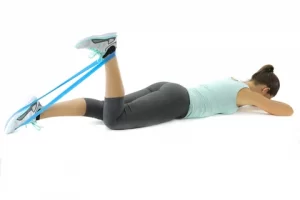
Seated hamstring curl
- Tie the ends of a resistance band to a significant item, such as a piece of furniture or exercise equipment.
- You seat in the chair and face it.
- Keep your feet together by wrapping the loop around one of your heels.
- Bend your knee and draw your heel back until you can no longer pull any further.
- Return to the beginning position by extending your knee.
- Then relax.
- Repeat this exercise 5-10 times.
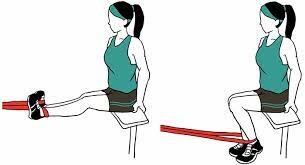
Standing hamstring curl
- Standing with your feet hip-width apart.
- For balance, rest your hands on a chair or your waist.
- Your left leg should now support your weight.
- Your right knee should be slowly bent, with the heel moving towards the butt.
- Maintain parallel thighs.
- Lower your foot gradually.
- Then relax.
- Repeat with the other leg.
- Repeat this exercise 5-10 times.
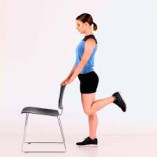
Stiff legged deadlift
- Holding the dumbbell in an overhand grip (palms facing you), stand with your feet shoulder-width apart.
- Your knees should be slightly bent, and the goal is to keep this tiny bend throughout the movement.
- Lower the dumbbell while bending at the hips and keeping your back straight.
- Drop until your glutes and hamstrings are stretched.
- Hold this position for a few seconds.
- Then return to your neutral position.
- Then relax.
- Repeat this exercise 5-10 times.
- Keep the dumbbell close to your body at all times and prevent jerky movements; instead, go slow and deliberate.
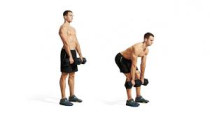
Single-leg deadlift
- Begin by standing with your feet hip-width apart and parallel to the ground.
- With your hands down, hold a kettlebell, barbell, or two dumbbells in front of you.
- You should put your weight on one leg while leaning forward with your hips, and your other leg should be straight behind you.
- Lift the leg that is extended and lean forward until your body is positioned in a “T” configuration.
- While carrying the weight, your arms must hang straight down.
- Keep your standing leg slightly bent.
- Hold this position for a few seconds.
- Slowly bring your extended leg into your starting position.
- Then relax.
- Repeat this exercise 5-10 times.
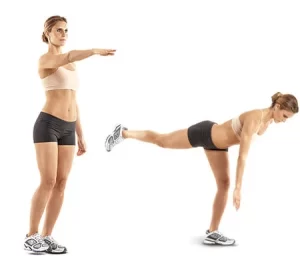
Toe touch
- Run your hands down the front of your thighs while keeping your legs straight until you reach your toes (or as low as you feel comfortable going) in a standing position.
- Hold the stretch for as long as necessary, then stand up.
- This will stretch your hamstrings and give your spine more movement.
- Hold this position for a brief time.
- Then return to your neutral position.
- Then relax.
- Repeat this exercise 5-10 times.

Sitting forward hamstring and spine stretch
- Sit down, straighten your legs in front of you, and stretch forward to touch your toes.
- Follow your comfort level as far as possible.
- A stretch should be felt in the back of the thighs/Hamstrings.
- Hold this position for a few moments.
- Then return to your neutral position.
- Then relax.
- Repeat this exercise 5-10 times.
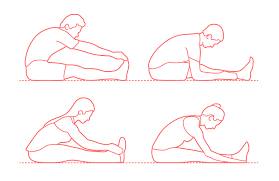
Bilateral straight leg raise
- Lie on your back with your hands by your sides or beneath your glutes.
- Hold your legs at a slight bending or straight.
- Raise your legs till your body forms a L shape.
- Hold onto this position for a brief period of time.
- Then return to your neutral position.
- Then relax.
- Repeat this exercise 5-10 times.
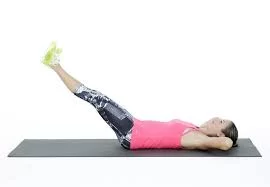
Double leg back stretch
- Lie on your back.
- Bring your knees to your chest.
- Maintain this position and experience a mild stretch in your back.
- If you get any groin pain while performing this exercise, stop.
- Hold onto this position for a short amount of time.
- Then return to your neutral position.
- Then relax.
- Repeat this exercise 5-10 times.

Goblet-squat
- Stand with your feet about hip-width apart.
- Point your toes outward.
- You’ll turn your hips outward.
- Hold the dumbbell firmly at your shoulders or in front of your chest in a goblet stance if you’re using weights.
- Inhale deeply, tighten your abdominal muscles, and push your hips back to lower into a squat position.
- At the bottom, pause, breathe out, and then push yourself back up to standing.
- Equally, load your midfoot and heel at all times.
- Then relax.
- Repeat this exercise 5-10 times.
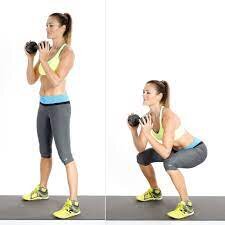
Lying hamstring stretch
- Lying flat with the legs completely extended on a mat or the ground.
- Keep your arms by your side.
- Now lift the leg towards your chest, and slowly bend the knee until it feels like it is stretching.
- Hold on position.
- Then return to your neutral position.
- Then relax.
- Repeat with the other leg.
- Repeat this exercise 5-10 times.
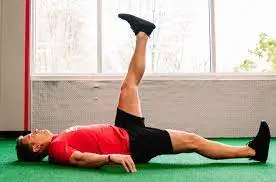
Chair lift:
- Lie on your back with a chair’s back supporting your heels.
- Lift your hips off the ground one at a time.
- Hold on to this position.
- Then take a position that is neutral.
- Then relax.
- 5–10 times should be done this exercise daily in a day.
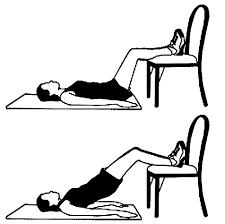
Extension Lag
- Sit near the edge of the bed (around mid-thigh).
- Do not let your legs come into contact with the floor.
- Put your hands on the bed.
- Extend the wounded leg as far as you can.
- Hold on to this position.
- Then take a position that is neutral.
- Then relax.
- Repeat this exercise on the opposite leg.
- Repeat 5-10 times this exercise.
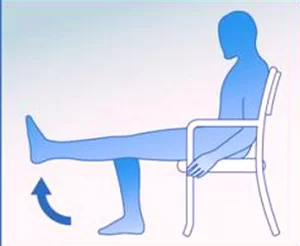
One-Legged Bridge
- Raising your hips until your shoulders and knees are in a straight line requires the support of your abdominal and buttock muscles.
- At the same moment, tighten your abdominal muscles as if you were trying to drag your belly button back towards your spine.
- Hold this posture for a few seconds.
- To get back to the starting posture, slowly and carefully lower the hips to the floor while maintaining an extended leg.
- Then return to your neutral position.
- Then relax.
- Repeat this exercise with the other leg.
- Repeat 5-10 times.
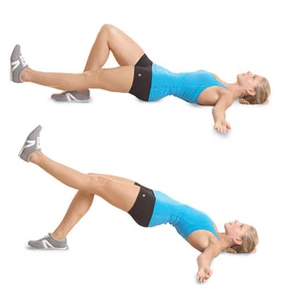
Reverse Plank
- Lay out an exercise mat on the ground.
- As you sit down, your legs should be extended in front of you.
- Put your hands behind your back with the palms facing down and the fingers spread wide.
- Each hand should be above your hips and level with your shoulders.
- Your hips and upper torso should be raised to the ceiling while applying pressure to your hands.
- From top to bottom, your entire body should be in a line that is straight.
- Take a look up at the ceiling.
- Hold this position for between 15 and 30 seconds while tightening the hamstrings, glutes, and core.
- Lower yourself to your starting position.
- Then relax.
- 5–10 times should do this exercise.

Alternating Hip Abduction
- Take a loop band and wrap both of your legs with it at around shin height.
- Focus on your abs and posture as you stand.
- Lift your opposite leg off the ground while you shift all of your weight onto one leg.
- Kick your leg out to the side while maintaining a straight elevated leg with the toes pointed forward.
- As far as you can without losing balance or swaying side to side with your trunk With control, put your foot back on the ground and change to the other leg.
- Then relax.
- 5–10 times should be done this exercise.

Kettlebell Swing
- Hold the kettlebell’s handles slightly in front of you.
- Keep your shoulders back and down.
- Stand with your feet slightly wider than hip-width apart and your toes angled out slightly.
- Maintain a straight spine with your shoulders, slightly bend your knees, move your hips back, and tip your body forward as you lift up the kettlebell with both hands.
- This is not a squat Because it is a hip hinge.
- Try to avoid excessive knee flexion.
- Roll your shoulders back, engage your core, and begin the exercise by contracting the glutes and hamstrings to completely extend your hips as you reverse the hip hinge (the hips stop right below your shoulders, not in front of them).
- Spin the kettlebell up toward the center of your chest.
- Maintain your center of gravity by remaining on your heels.
- Swing your legs through as you lower the kettlebell to repeat.
- Repeat this exercise 5-10 times.
- Be careful to perform a hip hinge exercise rather than a squat.
- By using the hinge action, you may focus on the hamstrings and glutes.
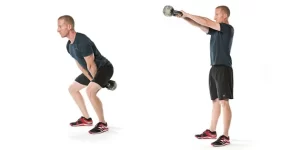
What safety measures are necessary when exercising?
- Maintain good posture while performing exercise.
- Prevent strenuous exercise.
- Warm up completely before exercising.
- If you have a sharp discomfort, stop exercising.
- Obtain the Proper Balance
- Keep hydrated.
When do you stop exercising?
- severe muscular ache
- You’re contagious.
- If there is any discomfort or numbness.
- Fever
- Headache
- Exercise should be stopped if it hurts.
What type of exercise or activity should you avoid if you have hamstring tendonitis?
- Avoid deep knee flexion or bending, which can shorten your hamstrings and lead to cramping.
- Avoid aggravating postures.
- Limit sitting for extended periods of time, especially if you’re sitting on a hard surface, which might irritate the tendon.
- Crossing your legs can further increase the strain on the tendon.
- Avoid biking, hiking, running, and other repetitive activities.
FAQs
How can I prevent hamstring tendonitis?
Before performing thorough action, perform a light warm-up, such as jogging in place.
Maintain the strength and conditioning of your hamstring and quadriceps muscles to avoid putting additional strain on the tendons.
Rest your hamstring tendons in between bouts of exercise.
Before and after exercise, stretch the tendons in the back of your thigh.
Maintain a healthy lifestyle by not smoking or using tobacco products, eating a portion of nutritious food, and exercising regularly.
What is a simple home exercise for hamstring tendonitis?
Single leg bridge
Straight Leg Raise
Hamstring Stretch in Doorway
Knee to chest
Seated Hamstring Stretch
Hamstring curls
Can exercising help hamstring tendinitis get better?
Exercise is regularly used to treat back pain and prevent further suffering and harm.
Exercises that strengthen the body’s supporting muscles include stretches.
Regular exercise can assist to reduce the frequency of recurrent discomfort.
What are the best exercises for hamstring tendonitis pain relief?
Lunges
Standing hamstring stretch
Foam roller
Squats
Ball Bridge Exercise with Leg Raise
Seating forward hamstring stretch
How often should someone with hamstring tendonitis exercise?
You can perform the hamstring tendonitis exercises every day for at least 30 to 40 minutes.
Gradual stretching and exercise will be beneficial to you.
What causes hamstring tendinitis to worsen?
Avoid provoking postures.
Limit long periods of sitting, especially on a hard surface, which might irritate the tendon.
Crossing your legs can further increase the strain on the tendon.
What should you do if you have a hamstring injury?
Returning too soon could make the damage permanent and make the injury worse. The most crucial time period after an injury is the first 48 hours. It is recommended to apply RICE (rest, ice, compression, and elevation). Rest and refraining from any activities that might have triggered the issue are essential.





